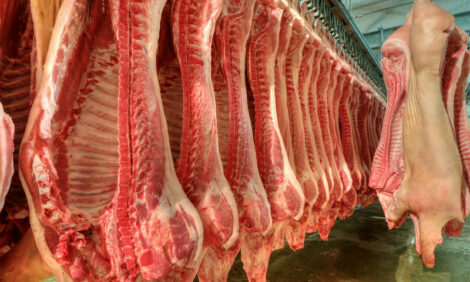



Better Supervision Improves Piglet Survival
UK & NORWAY - A new review finds that piglet survival can be improved - both numerically and cost-effectively - by more supervision around farrowing.Piglet survival can be improved by a range of management procedures, many of which occur in the perinatal period and require the supervision of farrowing by trained staff, according to a new study. First-named author, R.D. Kirkden of the University of Cambridge in the UK and co-authors there and at the Norwegian University of Life Sciences add that, although this incurs additional labour costs, there is some evidence that this can be economically offset by improved piglet survival.
In a review published in Journal of Animal Science, they say that pre-weaning mortality varies greatly among herds and this is partly attributed to differences in farrowing house management. They go on to describe the various management strategies than can be adopted to decrease mortality and critically examine the evidence that exists to support their use.
Firstly, they consider which management procedures are effective against specific causes of death: intrapartum stillbirth, hypothermia, starvation, disease, crushing and savaging. The most effective techniques include intervention to assist dystocic sows, measures to prevent and treat sow hypogalactia, good farrowing house hygiene, providing newborn piglets with a warm microenvironment, early fostering of supernumerary piglets, methods that assist small and weak piglets to breathe and obtain colostrum, and intervention to prevent deaths from crushing and savaging.
The provision of nest-building material and modifications to the pen to assist the sow when lying down may also be beneficial but the evidence is less clear, according to Kirkden and co-authors.
Because most deaths occur around the time of farrowing and during the first few days of life, the periparturient period is a particularly important time for management interventions intended to reduce piglet mortality. A number of procedures require a stockperson to be present during and immediately after farrowing.
Second, the researchers consider the benefits of farrowing supervision for pre-weaning mortality in general, focusing particularly on methods for the treatment of dystocia and programmes of piglet care that combine multiple procedures.
Finally, they discuss the need for good stockmanship if farrowing supervision is to be effective. Stockmanship refers not only to technical skills but also to the manner in which sows are handled because this influences their fearfulness of humans.
Reference
Kirkden R.D., D.M. Broom and I.L. Andersen. 2013. Invited Review: Piglet mortality: Management solutions. J. Anim. Sci. 91(7):3361-3389. doi: 10.2527/jas.2012-5637








